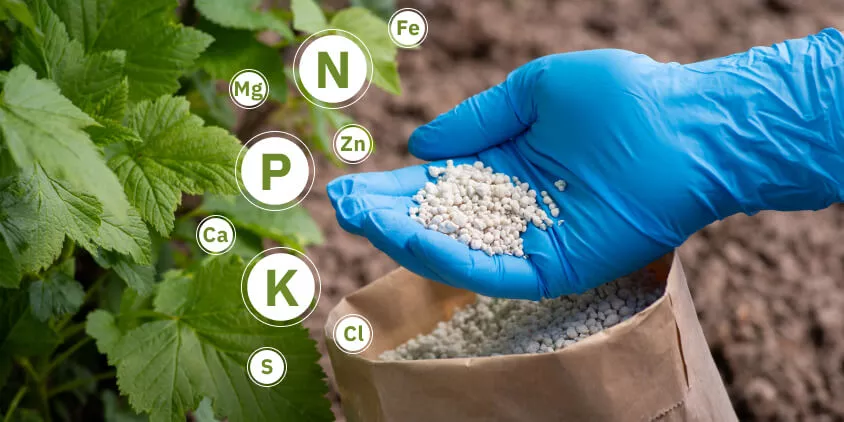Why Are There Different Types Of Fertilizers? To thrive, plants require a variety of nutrients, which they get from the soil through their roots. Each harvest reduces the soil’s potential productivity unless soil nutrients are restored. The correct type of fertilizer for plants can fix nutrient deficiencies.
Fertilizers supply plants with the three essential nutrients they need to grow: nitrogen (N), phosphorus (P), and potassium (K), as well as other needed micronutrients. The key parameters of different types of fertilizers used in agriculture are these nutrients and how they are obtained. Many factors, including soil quality, crop type, and application method, can influence fertilizer type decisions. There is a wide variety of fertilizing products available today, allowing farmers to create a nutrient-rich environment for their crops.
Inorganic Type Of Fertilizers Inorganic, or synthetic, fertilizers are chemical substances manufactured from natural-origin elements. Their main goal is to fulfill plant macronutrient requirements. Inorganic fertilizer type has the advantages of being economical, simple to use, and readily accessible to plants. Unfortunately, its natural acidity often kills off helpful microorganisms and makes the environment hostile to other forms of life. Moreover, overfertilizing with synthetics contributes to environmental pollution and global warming. Now, let’s delve deeper into different types of synthetic fertilizers.
Nitrogen (N) Fertilizer Type N-fertilizers are especially useful in the middle phases of a plant’s life cycle, when the plant needs the most support to keep growing and leafing out. The two most popular types of chemical nitrogen-based fertilizer in European fields are ammonium nitrate (AN), aka nitric acid, and calcium ammonium nitrate (CAN). With its dual-form nitrogen content, AN works well for crops that need fast nitrogen release. Outside of Europe, urea, along with urea ammonium nitrate (UAN) solution in water, is frequently applied. Urea’s versatility and high nitrogen concentration (minimum 44%) make it a common N-based product
Although most plants need the nitrogen type of fertilizer to thrive, too much of it can cause fertilizer burn, which might result in discolored leaves and even plant death. To prevent this, only apply nitrogen-rich feeding to your plants when they are actively growing and at a rate smaller than suggested on the label.
In some environments, nitrogen can be lost through volatilization, leaching, denitrification, and immobilization. This makes fertilization less effective and adds to global warming. As a solution, specific types of chemical fertilizers and additives appeared to lessen the impacts. Foliar, slow-release, and controlled-release nutrient products, as well as urease and nitrification inhibitors, are all examples of these.
Nitrogen fertilizer type must be applied at the start of the season and sometimes throughout, depending on the crop. To apply N-fertilizer at a variable rate , farmers need to be aware of the current field’s condition and vegetation density. For this purpose, EOSDA Crop Monitoring builds vegetation maps by using the most recent cloud-free images and segmenting the field into zones based on a specified vegetation index. The NDRE index should be used to build a fertilizing map in the middle and late phases of the growing season, whereas the MSAVI index should be used at the beginning of the season (when the soil is still somewhat bare). The normalized difference vegetation index (NDVI) is applicable year-round.
The Zoning feature facilitates variable rate application of inputs. Phosphorus (P) Fertilizer Type Phosphorus feeding, which serves to reinforce roots and stems, is crucial at all stages of the plant’s growth cycle. The phosphorus type of fertilizer also boosts reproductive success, including flowering, seed production, and fruit set. Phosphorus-based feeding, in contrast to nitrogen-based feeding, has difficulty penetrating plant tissues beyond the root zone. To maintain a constant P supply throughout the season, many farmers opt for a slow-release method. Because of its delayed action and lengthy duration, phosphorus fertilization is best applied before planting.
P-fertilizers come in a wide variety of chemical and physical forms. Single superphosphate (SSP), triple superphosphate (TSP), diammonium phosphate (DAP), ammonium dihydrogen phosphate (ADP), and ammonium polyphosphate (APP) liquid are the most widely used types of P-fertilizer.


